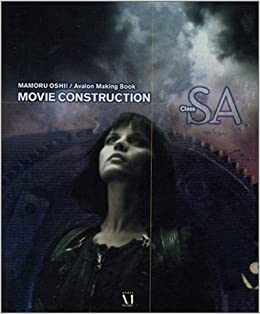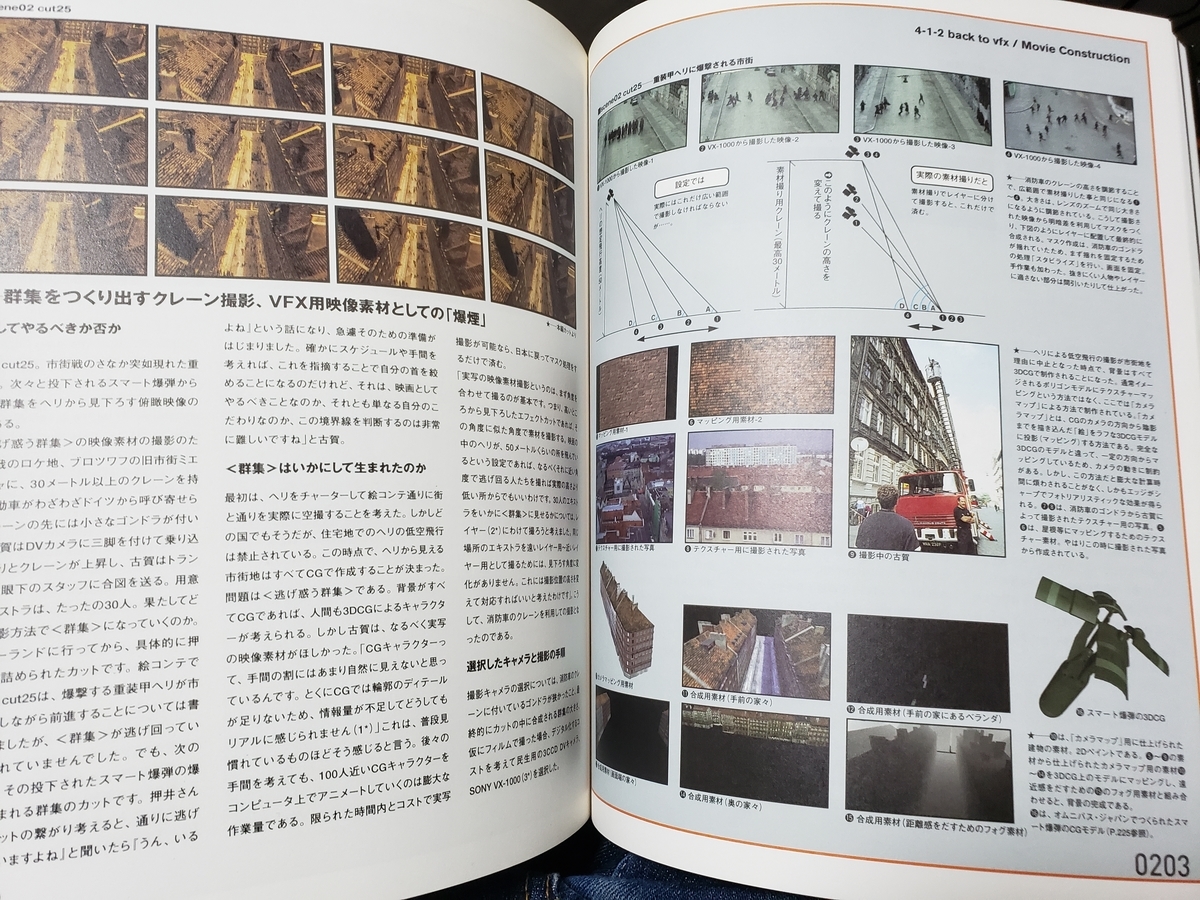-----
There're some Mamoru Oshii book lists on the Internet, but they don't have detailed explanations about the contents. My Mamoru Oshii book collection is far from complete, but I'd like to write some short summaries for each of those books.
I apologize in advance for grammatical errors and misinformation.
-----
title: アヴァロン メイキングブック ムービーコンストラクション クラスSA
(Movie Construction Class-SA: Avalon Making Book)
release: 01/31/2001
publisher: Media Factory

[contents]
introduction
story of Avalon
analysis of Oshii's direction
preproduction
shooting
postproduction
shot list

[review]
This is a guidebook about Avalon's production process.
There are some other books about Avalon, but I suppose this has the richest content.
The main content is divided into four parts: direction, preproduction, shooting, and postproduction.
The direction part is too long. A famous writer called Toru Nozaki wrote this part, but his commentary is too vague and verbose. You can analyze the film by yourself, so you don't need this part.
The preproduction part explains the background of the film, scriptwriting process, storyboarding, location hunting, audition, concept art design, mechanical design, and prop design.
In the late 90s, Oshii joined Digital Engine Project and developed G.R.M. That project was canceled, so Oshii brought the ideas into a smaller project. That's Avalon.
The starting point of the story idea was Oshii's game experience. He played Wizardry so much, and one day, he thought "Why can't I buy anything with these golds in the real world?" He also saw fighting gamers in arcades. Those two things gave him an idea of "game players who earn living from a game."
Oshii and Kazunori Ito co-wrote the script. The idea of "Nine Sisters" was made by Ito. Oshii said, "That idea made it much easier to understand the world of Avalon." They developed the story to show the punchline of the film, "Don't let appearance confuse you. This is the world where you belong."
In the audition, Oshii ordered the staff to find someone who looks like Motoko Kusanagi. The staff said that's impossible, but Małgorzata Foremniak was a perfect actor for that role.
In the concept art phase, Oshii introduced René Magritte's "Empire of Lights" as an inspiration source. In that painting, the difference of the sky and the ground makes a surreal atmosphere. Oshii wanted to achieve that kind of effect in Avalon.
In the mechanical design process, Atsushi Takeuchi made realistic weapons, but Oshii rejected them. Takeuchi didn't get what was the right direction, but one day, he tried unrealistic, absurd weapon design. That was what Oshii wanted. Takeuchi realized, anime weapons need to be realistic, but Avalon's world needs more fictional design.
Small props like the headgear, ID card, and keyboards were made in Japan. Other environmental production designs were done by Polish staff. Oshii's request to the design staff was "Vostok". After finishing the film, Japanese designers were surprised by the quality of the Polish staff's design, especially the design of the Avalon terminal room.
The shooting process is explained in another book, so you don't need to get this book for the shooting diary. However, only this book includes interviews with Polish staff.
The production designer called Barbara Novak imagined something like "1984". The writer of this book says that her dog mediated between Japanese staff and Polish staff at first.
In the interview page of Gregorz Kedzierski, the writer explains how the Polish shooting system inspired Oshii. Oshii says "Polish system with directors of photography is a perfect system. I realized that in the shooting process. In that system, the staff has only two bosses: a director and a DP. Those two people decide everything."
Kedzierski says, he realized in the meeting that contrast, focus, and aperture don't matter at all in Avalon. That's why he chose Kodak's new film. He used wide-angle lenses a lot in Avalon to break the sense of reality.
Małgorzata Foremniak tells that Oshii's direction was always to the point and simple. Generally speaking, Oshii earned respect from Polish staff, apparently.
The main part of this book is the explanation about post-production.
The writer put short explanations and summaries of special effects’ history, visual effects, digital composition, motion-tracking technology, 3D-CGI, film's color, digital color, etc.
From the beginning, Oshii intended to change colors, textures, and backgrounds by Quantel's Domino system. If they can control all the materials by computer, any kind of material including live-action footage, anime, and tokusatsu can be used in the same film. That's the core concept of G.R.M., and that idea was partly brought to Avalon. It is not a unique idea by today's standards, but the process is much more complicated and interesting than people think.
For example, to make the 2D fire effects in the introduction, the staff needed to synchronize the camera movement and the composited 2D effects. The visual effect supervisor called Koga made special motion tracking markers for that kind of shot. (It was a dolly-and-pan shot, so Koga needed to shoot the 3D rotation movement of markers.)
The explanation about CGI makes us consider the machine powers. You probably remember the GitS-like staff roll. Even that kind of simple image was pretty difficult to render because they needed to render the afterimages like nixie-tube. It was difficult with the late 90s machine powers.
This book includes much more interesting content about effects, but they're too much and too complicated to summarize here. Please check it by yourself.
Overall, it is a very good book for Avalon fans and Oshii fans. It makes it easier to understand the changes in Oshii's later works like INNOCENCE.